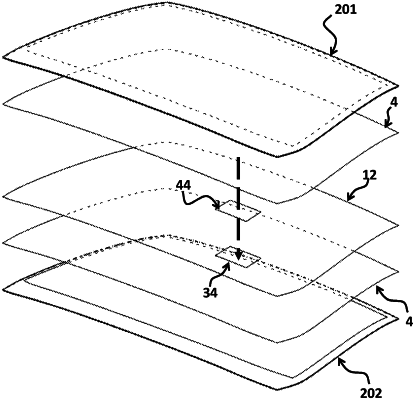| CPC B32B 17/10036 (2013.01) [B32B 3/266 (2013.01); B32B 17/10045 (2013.01); B32B 17/10174 (2013.01); B32B 17/10293 (2013.01); B32B 17/10541 (2013.01); B32B 17/10752 (2013.01); B32B 17/10761 (2013.01); B60J 1/001 (2013.01); B60J 1/002 (2013.01); B60K 35/00 (2013.01); B60S 1/026 (2013.01); B32B 2605/006 (2013.01); B60K 2370/143 (2019.05); B60K 2370/152 (2019.05); B60K 2370/785 (2019.05)] | 17 Claims |

|
1. An automotive laminate, comprising:
an outer glass layer;
an inner glass layer;
two plastic interlayers located between the outer and inner glass layers;
a single compensation layer consisting of a rigid transparent material made of glass or plastic, the compensation layer having a cutout area in a visible area of the laminate; and
an insert comprising a substrate made of a compatible material that is similar to or the same as the material of the compensation layer, such that the substrate and compensation layer match in at least one of index of refraction, color, and thickness, and active or passive electronics;
wherein the insert is placed into the cutout area in the single compensation layer;
wherein the single compensation layer and the insert are sandwiched between the two plastic interlayers and the single compensation layer is in contact with the two plastic interlayers; and;
wherein the single compensation layer has a glass transition temperature above an autoclave process temperature, wherein the autoclave process melts the two plastic interlayers.
|